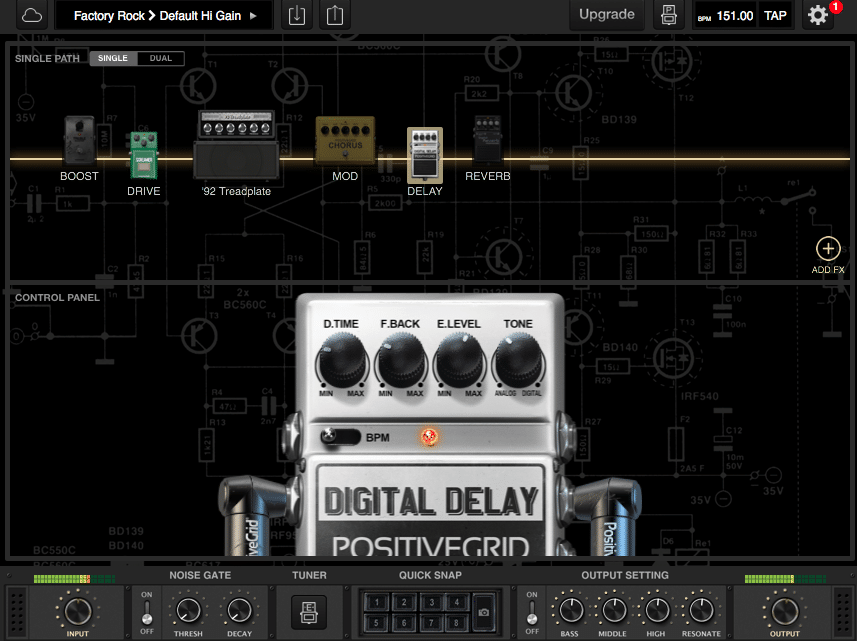
- POSITIVE GRID BIAS DESKTOP NOISE SOFTWARE
- POSITIVE GRID BIAS DESKTOP NOISE PLUS
- POSITIVE GRID BIAS DESKTOP NOISE SIMULATOR
Does it work? Well, the closer you can set the simulated rig to the real one the better I tested it with my JCM800 using the (rather obvious) “British Lead 800 model”, with a close-up SM57 on a 4x12 with old British made greenbacks - just like I had the sim set-up. The Amp Match function takes this a step further than simply selecting and adjusting a similar model, because it will allow me to compare a simulated rig with a recording from my real one, and then automatically modify the model to match. It’s great that an amp sim can give me 300 different models of amp and 823 cabs, but a lot of the time what I want is a very good recreation of one of my own real amps and cabs. On the other hand, if you want to spend hours playing, and getting no work done, you can do that too - don’t ask how I know! Tweaks include adjusting bias settings and types of tubes (the graphics change with tube types) - so if you fancy a single-ended Plexi with over-biased 6V6 output tubes, an over-saggy GZ34 tube rectifier and a US style transformer, well you can have it. From each starting point you can change and tweak pre-amps, tone stacks, power stages, rectifiers and transformers to an absurdly-obsessive level, and then add a couple of layers of additional EQ if you want them. BIAS lets you do this sort of tinkering in the safety of software. I have a photograph somewhere of my workbench with a pair of tube amp chassis laid-out, with the output stage of one of them jumpered across to the output transformer of the other it’s a wonder I’m still alive.
POSITIVE GRID BIAS DESKTOP NOISE PLUS
Select a model from one of the basic categories (Clean through to Insane, plus Acoustic, Bass and Custom), select from a range of speaker models and mic types (there are no effects), and position your mic (no multi-mic options as far as I could figure), adjust the controls and play.
POSITIVE GRID BIAS DESKTOP NOISE SOFTWARE
Software should be simple to use: BIAS is. So, what does BIAS have to offer? Well, it’ll model an amp/cab rig as you’d expect, and it also does amp design and rig-matching. So, if you want to bring a new, amp-sim to market, you’d better believe that you have something special to offer. All seem to claim to replicate in exacting detail every nuance of whatever it is that they’re modelling, and in fairness, over the years the best of the best of them have become so good that they’ve found their way onto world-class mega-star recordings (and stages).

Some sims are purely software, some are based on dedicated hardware, some have hundreds of incredibly detailed models of specific amps, cabs and effects, others have a small handful of “similar to” models, some use algorithmic modelling, others use convolution technology. Today, there are more different products available than I can be bothered to count, and almost as many different approaches to modelling and presentation.
POSITIVE GRID BIAS DESKTOP NOISE SIMULATOR
Can't afford a stockroom filled with ancient Tweeds, Plexis and AC30s? Tempted by amp simulator software but don't know where to start?Īmp sim software seems to have been around forever I’m sure it really hasn’t, but the oldest example I can find installed on my machine is dated December 2002 and that’s a loooooong time in software terms.


 0 kommentar(er)
0 kommentar(er)
